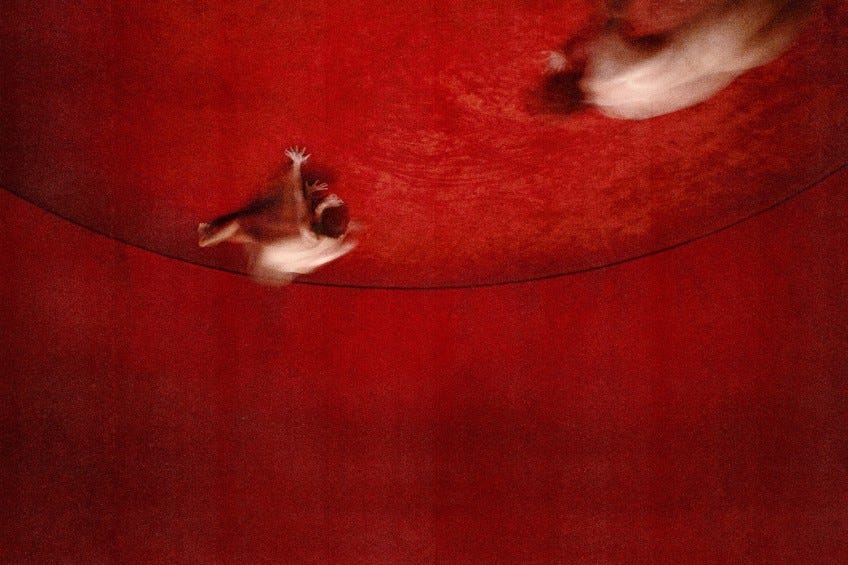Resonant Tones: Ü & EYEYE by Lykke Li (Capsule Review)


[Original publication: No Proscenium, 9/7/22]
I was surprised that Ü & EYEYE failed to deliver. In partnership with an esteemed cultural institution, an internationally acclaimed, award-winning musician unveiled a new, audiovisual album (described as “the singer’s magnum opus”) accompanied by a live performance.
So what went wrong?
The one-night-only performance was problematic. Beginning in The Broad museum’s lobby, a choir kicked off the show — briefly. Gorgeous harmonies were interrupted by a mass migration to the third floor (and main event), deflating the mood and momentum that had only just sparked. Upstairs, Lykke Li was not to be seen. Without any elevated set or staging, she could be heard but not seen. With rows of audience in front of me, my vantage point revealed nothing about the singer’s performance, why the show was set in a museum, or how it related to the art.
Get Laura Hess’s stories in your inbox
Join Medium for free to get updates from this writer.
SubscribeSubscribe
And then there’s the multiday installation, which claimed to be “a hyper-sensory cathedral of female romantic fantasy.” The press photo depicted a curved space covered in lush, red velvet. Two blurred, nude figures crawled on the ceiling. This evocative imagery was front of mind as a museum docent ushered us into… a theatrical black box. Lined with standard-issue black carpet and curtains, the proscenium orientation had a screen at one end. Viewers sat or stood, watching the projected video.
With themes of obsession and addiction, the heartbreaking narrative consisted of footage of naked dancers (the red velvet room), and less abstract “city” recordings. The latter involved gorgeous, Michael Mann-esque shots of Los Angeles; amidst sweeps of nighttime driving, a love triangle unfolded. As Lykke Li’s songs played, the video cycled through spliced sequences: progressing forward, looping back, and alternating between sped up and real-time motion for both the dancers and the city shots. The repetition quickly shifted from disorienting to tedious.
Docents explained that a custom scent was formulated for the experience: the carpet was infused “with the scent of regret and intoxication.” Through my mask I could smell only my own regret (also customized for the experience).
So what about the “hyper-sensory cathedral of female romantic fantasy?” I know it can be done, because I’ve been to one before.
In 2017, Björk Digital arrived in Los Angeles. A traveling exhibition focused on virtual reality, it included a presentation of Björk’s heartsick song, “Black Lake.” Originally commissioned by the Museum of Modern Art, the installation consisted of two screens at opposite ends of a dark room. The looping, 10-minute music videos were different captures of Bjork’s performance in the same Icelandic terrain. Speakers populated the surfaces, creating an engulfing soundscape and a landscape of cave-like stalactites and stalagmites (different from the felt cones at MoMA). The installation stretched the song from lyrics and melodies into a visceral, sensorial, and immersive experience.
Both Björk Digital and the MoMA retrospective were full-scale shows, warranting detailed (and costly) production design. And yet, even minor adjustments to Ü & EYEYE could have generated an outsized impact.
In the end, there was no hyper-sensory cathedral or romantic fantasy. There was only the sad reality of poor execution.